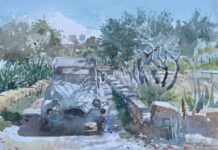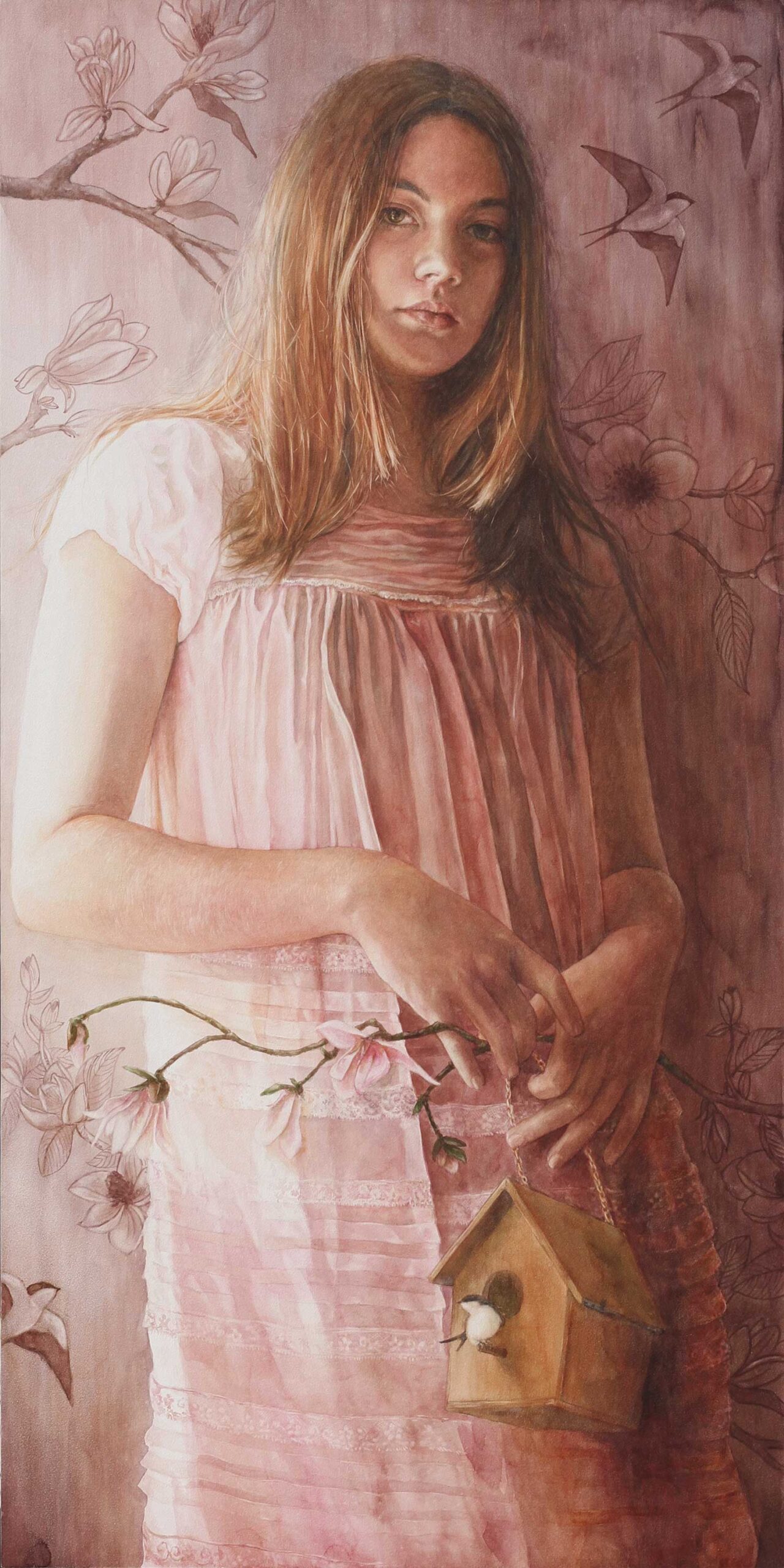
“The model’s body language was the inspiration for this painting,” says Daniela Werneck. “Her outfit and the light behind her reminded me of my adolescence, I wanted to represent that feeling of being home. The photoshoot happened in my home, right at the front door. The light that bathes my entrance in the winter is beautiful. Lisa (the model) was wearing a vintage nightgown, the light over her and through her translucid outfit was breathtaking. In the painting, she is holding a brunch that comes from the wallpaper in the background to reinforce the meaning of roots. Swallows are common in my hometown, just as they were in my grandparents’ in Portugal.”

Step 1
“As we can see here are the dots and the drawing, I make from them. In this case, I drew even more than usual. I rarely draw shadow lines or mark any shadows in the drawing.”
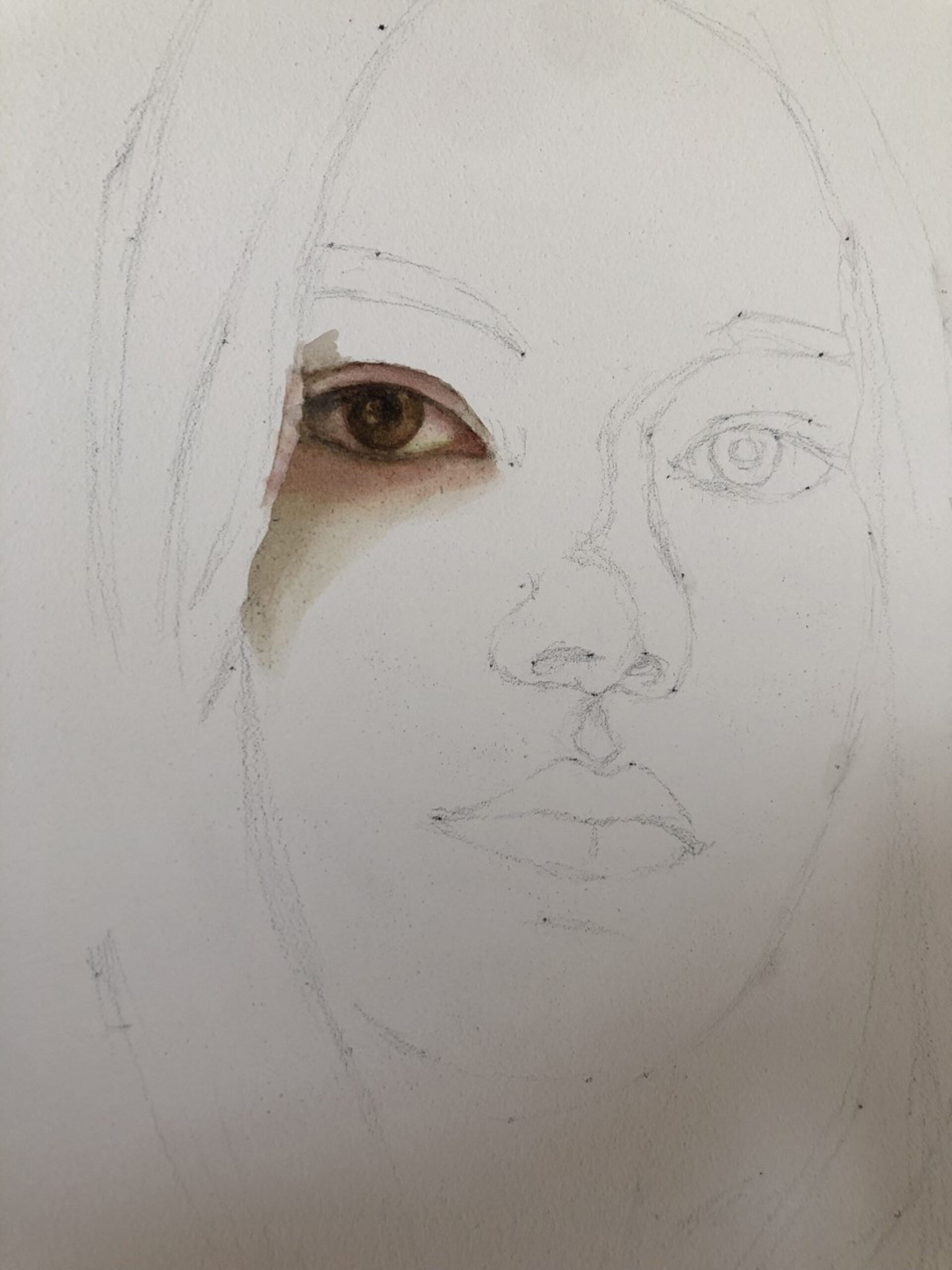
Step 2
“I always start a painting with a small area, usually an eye or a mouth, and I paint all that small area all the way to the end because seeing this area already finished motivates me to finish the painting. Seeing the beauty of this small detail helps me to get over the ugly stage.”
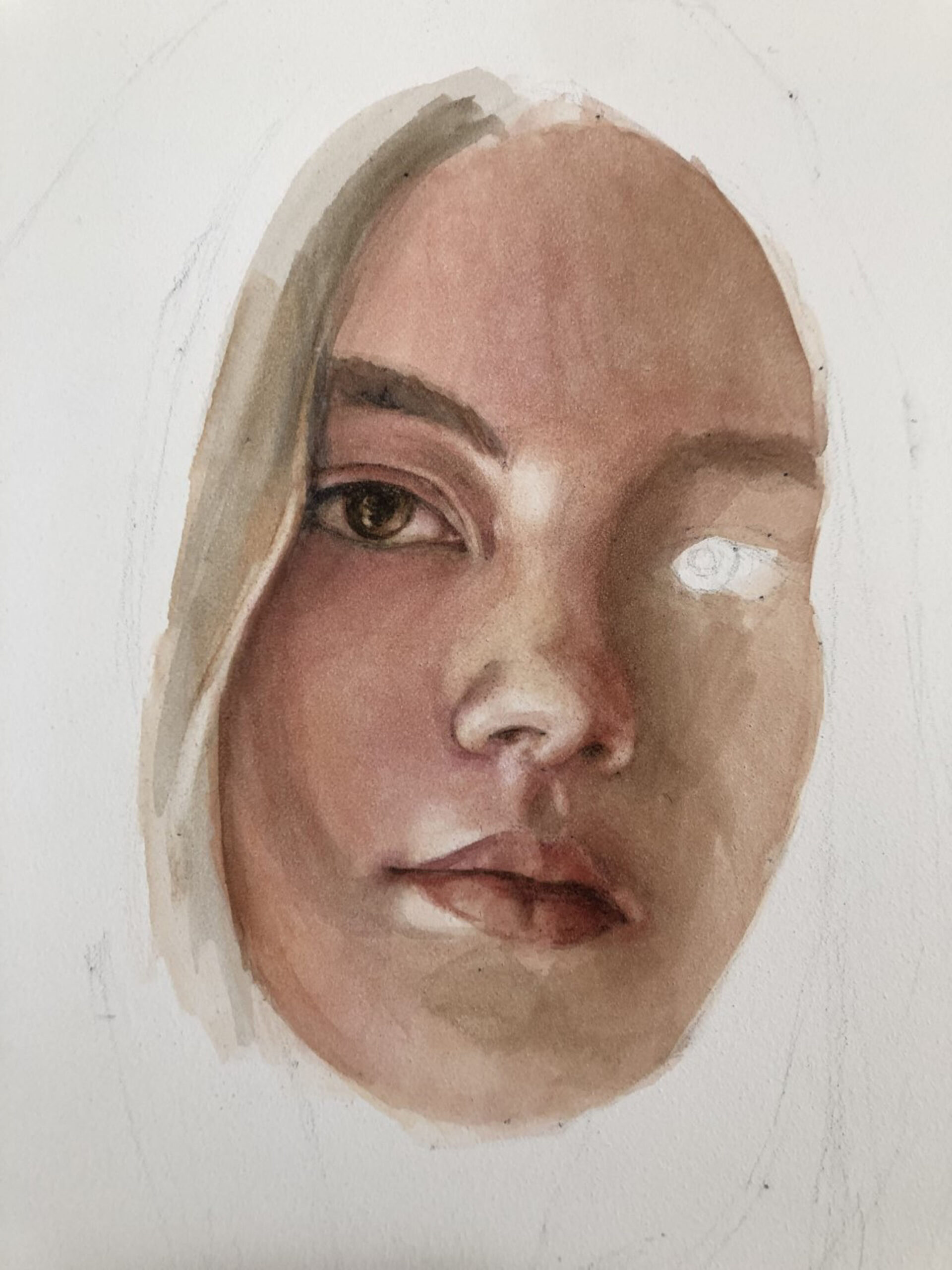
Step 3
“I start painting the areas around the eye. For this painting, I used only three colors HWC Crimson Lake, QOR Burnt Orange, and QOR Sap green. The skin tones were made with them; where the light is more yellowish I had more burnt orange; where it’s more pinkish, I used more the crimson color, and there I go. This is the most limited palette I’ve used to create a painting.”

Step 4
“I think the hair is the only area where I work from dark to light while painting. I make a big shape with the darker tone, and then, using a wet flat brush, I lift out the pigment applied, creating the lines of the strands of hair or its shine. Then I apply a lighter tone and remove the pigment again in other areas. I keep that sequence of applying and removing layers until I get the result I want.”
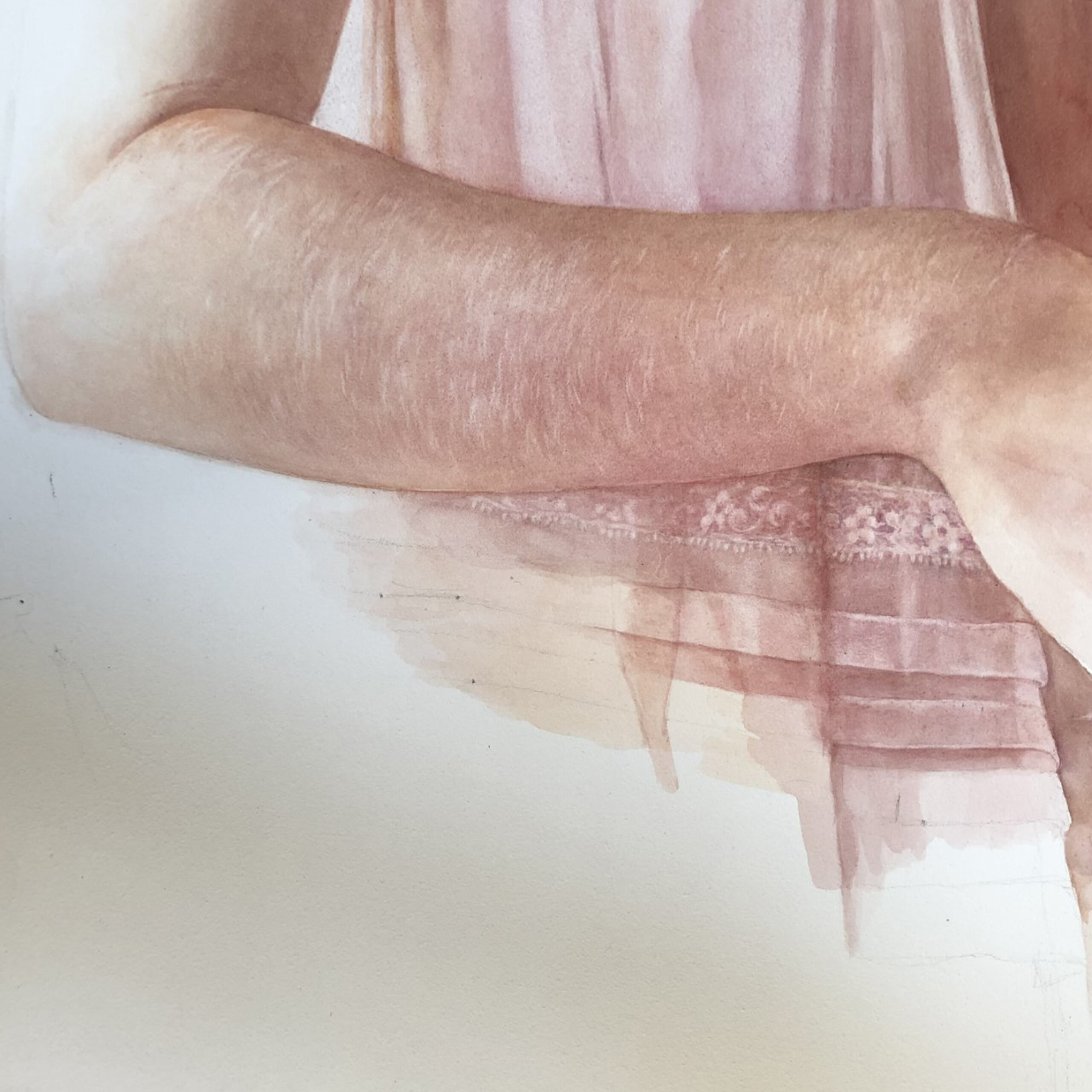
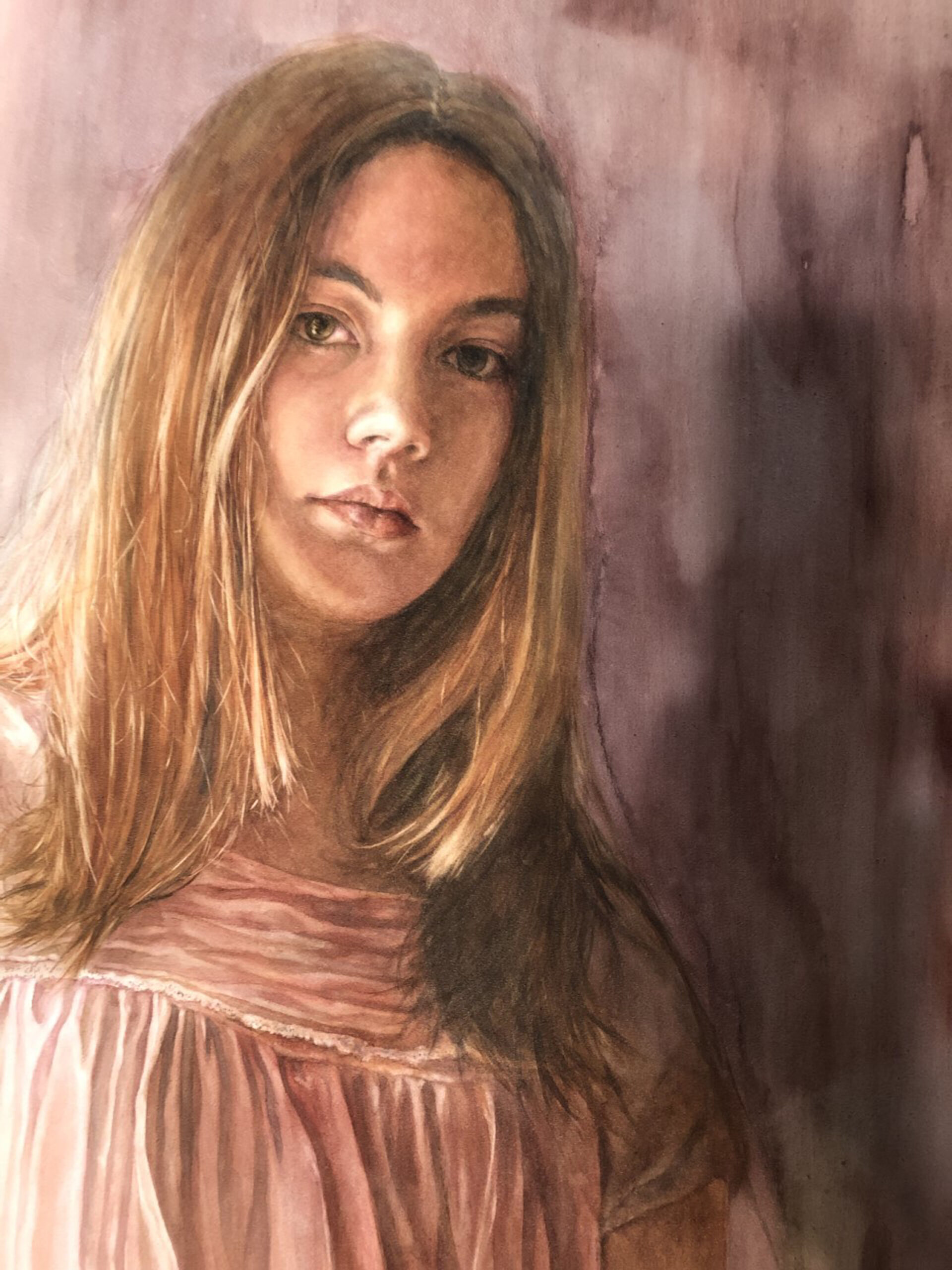
Step 5
“I started this painting because I really like the image and I let the painting itself guide me to its end. In the original photograph, the model was holding a robe, and I knew I didn’t want that. I wanted something more innocent and with some symbolism, but I wasn’t sure what yet.”
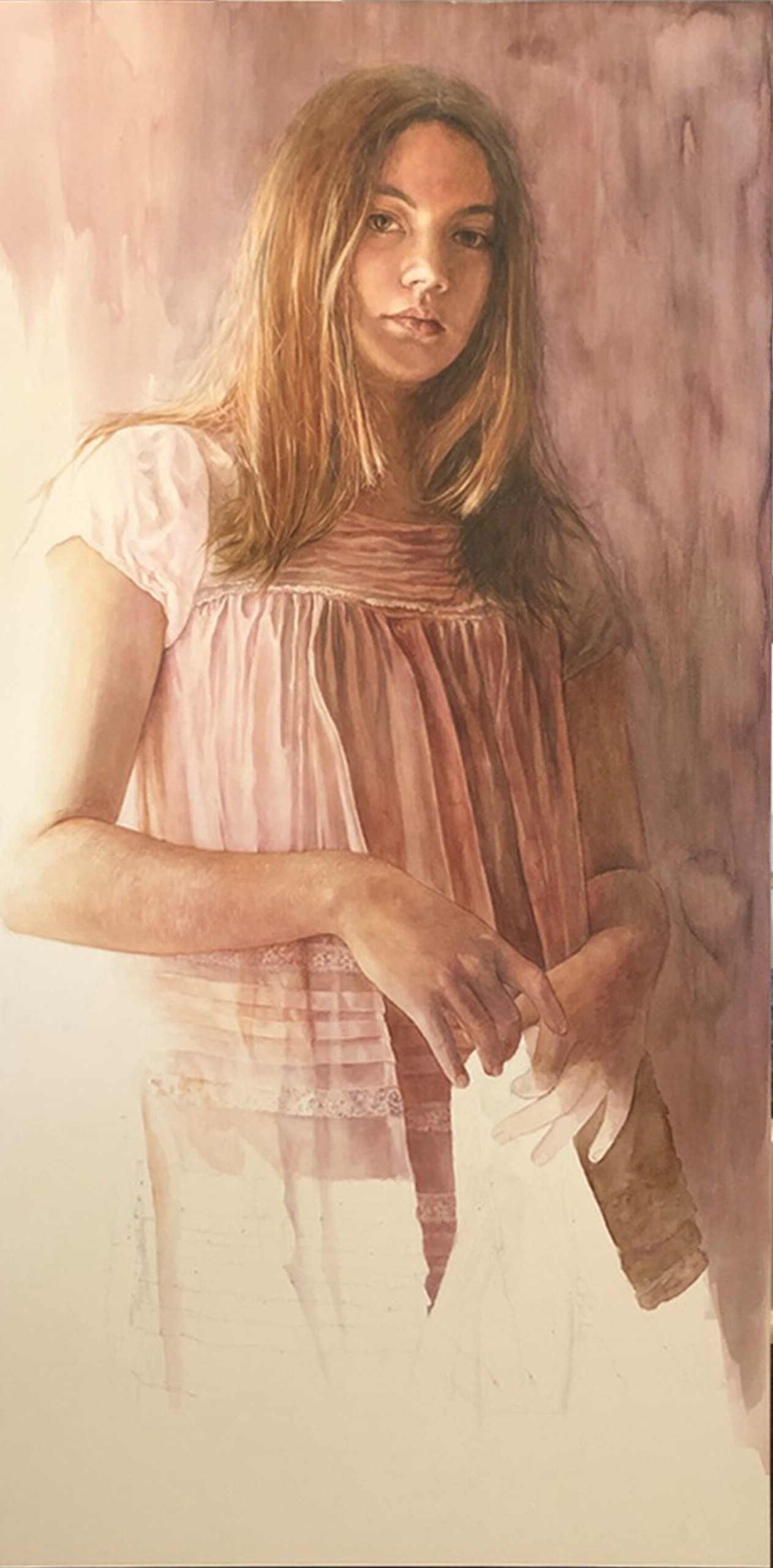
Step 6
“I painted the nightgown, made the details of it, and went to the background. When working with a limited color palette we have this advantage, we can make anything in the background and not worry about colors. Notice that the entire area at the bottom part where the robe was still without any color.”
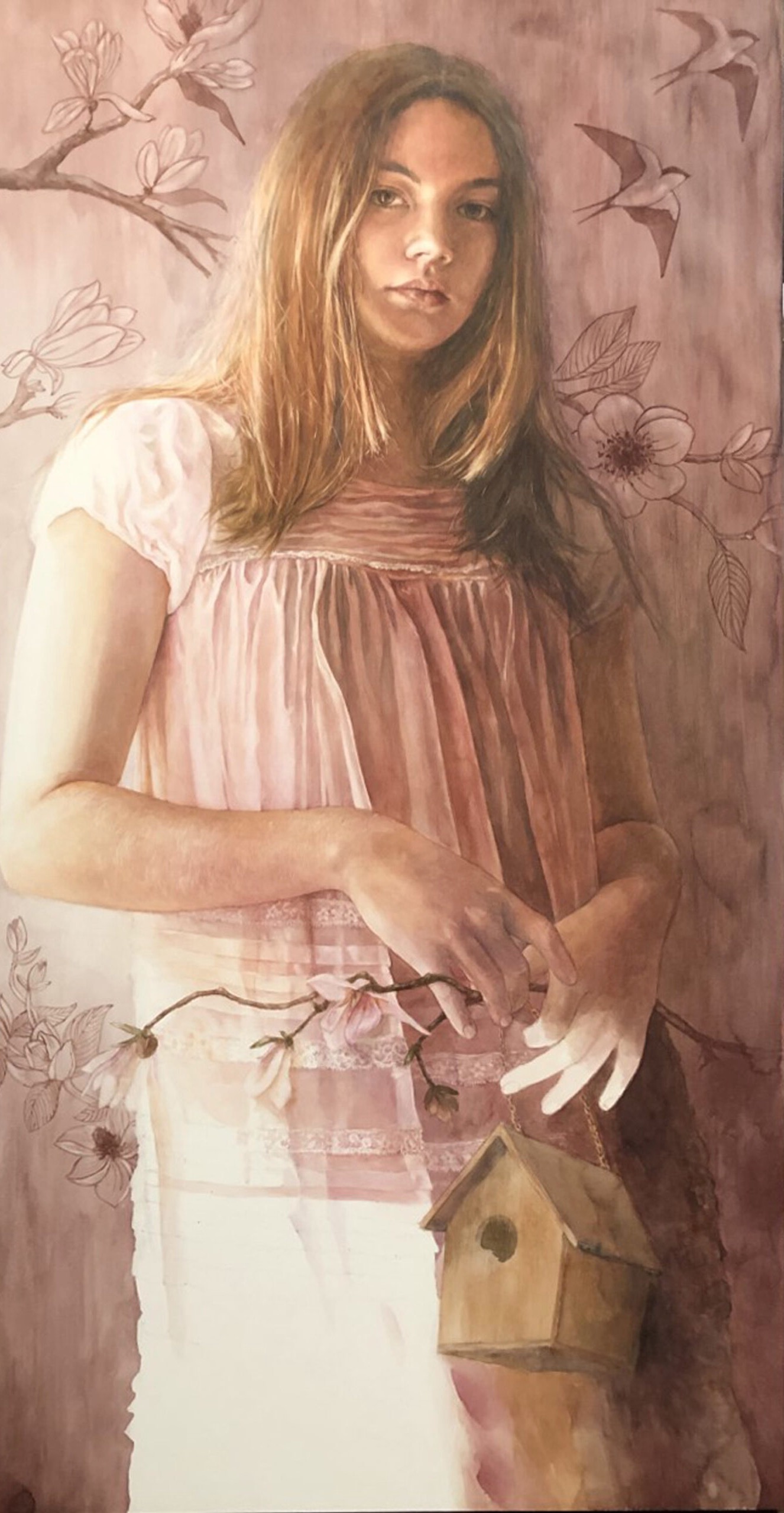
Step 7
“My favorite color has always been red, and the warm colors that come from it make me feel at home, they comfort me. The pink tone of this painting brought me this feeling of a warm home and brought me to the idea of the birdhouse. Arriving at this idea, everything became easier. I really like the magnolia flower and the color was perfect for this painting, so I included a branch in her hands. The background reminds me of a wallpaper; it brings a feeling of being in a house without giving up the bird and the magnolia tree already in her hand.”

Finished Painting
“I’m a very homely person, I really enjoy being at home, my home is my haven and that’s why this painting is quite magical for me. After finishing the painting, I varnished it with UV resistance spray.”
What if your most successful portraits are still dull and lifeless?
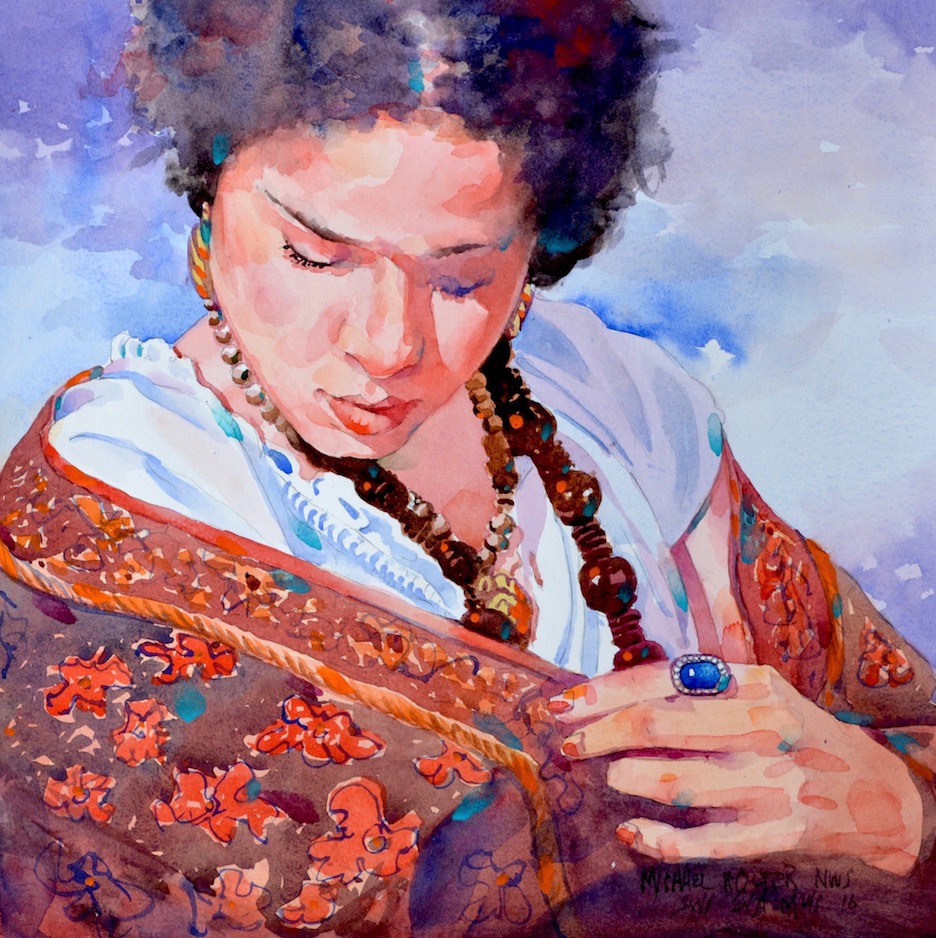
Breathe life into your portrait painting with Michael Holter’s 7 Steps to Watercolor Portraits. In this video, you’ll discover how to get a good composition for your painting, along with Michael’s secrets for using warm and cool for a portrait that sparkles … plus numerous tips that bring it all together.




